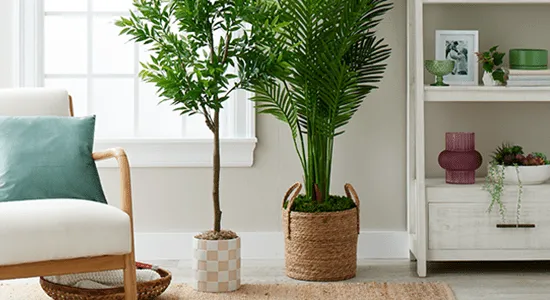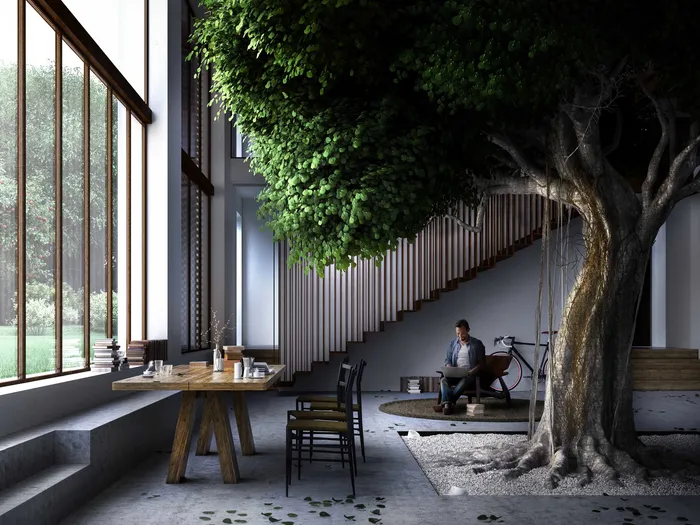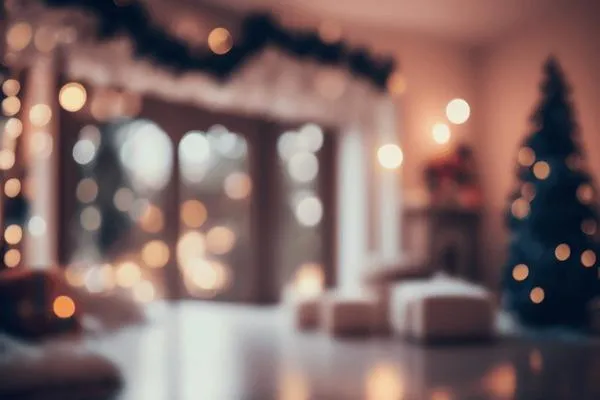Everything You Need to Know About Keeping Indoor Live Trees
If you’re searching for “indoor live trees,” chances are you’re considering bringing the beauty of nature inside your home. From plant selection to care requirements, keeping trees indoors may seem daunting at first. But with the right information, live trees can thrive inside and benefit your overall well-being. In this comprehensive guide, I’ll cover all the bases to help you choose, set up, and care for indoor trees like a pro.
Choosing the Right Tree for Indoors
When it comes to selecting an indoor tree, not all species will adapt well to life inside. Here are some top choices that tend to do exceptionally well in household conditions:
- Ficus Trees: Figs are practically indestructible and come in a variety of shapes and sizes. Their small leaves don’t shed much. Great for low or high light.
- Dracaena: These colorful, ornamental plants are extremely tolerant of low light and neglect. A good pick for busy households.
- Ponytail Palms: Despite their name, these are actually cycads with a distinctive fountain shape. Thrives with neglect in any indoor spot.
- Chinese Evergreen: Leathery, glossy leaves come in bright patterns. Tolerates low light and varied watering.
From my experience, figs and dracaena are amongst the most foolproof options. But research any tree first to ensure it’ll suit your space before buying.

Conditions for a Happy Houseplant Tree
No matter which species you choose, replicating ideal growing conditions indoors takes some know-how. Here are the basics for setting up your tree to succeed:
- Light: Most trees need medium to low indirect sunlight. Avoid direct sun on leaves which can scorch them. Place near an east or west window.
- Soil: Use a soil made for houseplants which drains well. Potting mix sold in bags works great. Replace annually.
- Pot: Choose a container 2 inches wider than the root ball. Terra cotta, plastic and glazed ceramic all work well.
- Watering: Water when the top 1-2 inches of soil are dry. Avoid soggy soil which causes root rot.
- Humidity: Group plants together or use a pebble tray to boost moisture levels, which many trees prefer.
With the right setup, trees get the environment they need to thrive under four walls. The rest is minor maintenance.
Caring for Your Indoor Tree Long-Term
Keeping trees healthy over weeks and years takes some TLC. Here are the basics of ongoing care:

- Water when dry 1-2 inches down, not on a schedule. Water thoroughly until it drains from the bottom.
- Fertilize in spring and summer with a diluted, balanced houseplant formula every few months as leaves grow.
- Repot if roots fill the pot, using a container just 1-2 inches larger. Do this in spring as new growth starts.
- Dust leaves occasionally to remove debris which blocks sun. Wipe with a dry cloth or use a plant-safe compressed air product.
- Prune as needed to shape and control size. Cut back leggy growth or thin inner foliage that receives no light.
- Rotate the pot weekly so all sides receive even indirect sunlight which discourages one-sided growth.
- Address issues early like pests, droopiness or browning which left can cause more damage. A little TLC goes a long way!
The type of routine care I’ve described allows trees to look their best for years. It requires just minutes weekly once you get the hang of it.
Additional Tips for Tree Care Success
Here are some bonus tips I’ve picked up over the years to help your trees happily stick around:
- Mist leaves occasionally if the air is very dry.Trees like humidity around 40-60%.
- Check the drain holes in the pot aren’t blocked preventing water from exiting. This causes root rot issues.
- Use a humidifier nearby if conditions are too dry during winter when heat is on.
- Move plants slightly throughout the year to expose different sides to the available sun. This prevents lopsided growth patterns.
- Consider aplantlight if windows provide insufficient illumination. A grow light raises sun exposure.
- Isolate any sick tree away from others as a precaution if you spot pests or disease. Quarantine and treat the issue promptly.
With quality care adapted to suit each tree’s needs, even finicky indoor species can succeed long-term. Adjust as you go based on how plants respond.

Benefits of Indoor Trees Beyond Aesthetics
While greenery obviously brings natural beauty inside, trees provide more than a nice decorative touch. Research shows trees also benefit health and mood in bigger ways:
- Trees absorb chemicals indoors, improving overall air quality. This is especially useful in tightly-sealed modern homes.
- Their photosynthesis releases oxygen and helps combat indoor air pollutants like volatile organic compounds from furniture or cleaning supplies.
- Views of and interactions with foliage have been proven to lower stress and boost happiness. Their presence lifts mood.
- Indoor trees act as miniature forests, encouraging restoration and stress reduction similar to outdoor nature exposure.
- As companions, caring for trees fosters nurturing habits and a sense of purpose that feeds well-being.
So in a sense, trees earn their keep beyond beauty alone! They tangibly contribute to healthier, calmer indoor spaces.
I hope this comprehensive guide has helped address all your questions about bringing the benefits of living trees inside. From plant picks to care techniques, diligent routines keep greenery content for seasons to come. Feel free to reach out if you have any other questions!

Factors to Consider When Choosing an Indoor Live Tree
| Tree Type | Size | Light Requirements | Water Needs | Care Level |
|---|---|---|---|---|
| Ficus | Small to Medium | Medium Indirect Light | Allow Soil to Dry Slightly Between Waterings | Low |
| Christmas Cactus | Medium | Bright Indirect Light | Allow Soil to Dry Before Watering | Low |
| Poinsettia | Medium | Bright Indirect Light | Keep Soil Moist | Low |
| Areca Palm | Medium to Large | Bright Indirect Light | Allow Top inch of Soil to Dry Before Watering | Low |
FAQ
- How long can an indoor live tree last? An indoor tree can survive for about 4 weeks on average with proper care. However, it basically depends on the type of tree. Needle-bearing trees like firs and pines may hold onto their needles for a month or so. Broadleaf trees like maples usually drop their leaves faster, within 2-3 weeks.
- What is the best way to care for an indoor tree? To keep an indoor tree healthy as long as possible, make sure it gets plenty of sunlight throughout the day. Place it near a bright window. Also, be sure to water the tree daily and check the soil. It should be kept moist but not soaked. You may need to water it a little more than once a day. Does this help keep your tree looking its best? Let me know if you have any other questions!
- Will live Christmas trees dry out indoors? Live trees indoors will basically dry out faster than they would outside. Running a humidifier nearby can help, but the low humidity inside homes means trees use more water than their roots can take in. Perhaps try misting the branches each day if it starts to look kinda droopy. Also, keeping it out of direct heat vents and sunny windows may buy some time. Still, after a few weeks it will probably need to go back outside to recover.
- Can indoor trees be planted outside after the holidays? It’s possible for some trees to survive being transplanted outside after spending time indoors. However, the stress of moving can weaken them. The roots may have become pot-bound indoors too. Trees like fir have the best chance. Before planting, give it time to recover from holiday stresses. You could place it in a sheltered spot and see if it makes it. Might be worth a try!
- Is there a benefit to using a live tree indoors? Live trees are better for the environment than fake trees since they are biodegradable. Also, the lovely scent of a live tree filling your home is an amazing experience. And watching the tree years later growing happily outside is rather satisfying. However, keeping trees hydrated indoors can be tricky work. So maybe a fake tree sort of makes more sense for convenience. Is it worth the effort to go live?
- What types of trees work well indoors? Some tree varieties tend to survive indoors better than others. Needled evergreens like noble fir, Nordmann fir and Canadian fir can apparently stay fresh looking for 4 weeks or more with proper watering. For broadleaf trees, grapevine, cherry, or crabapple may hold onto their decor better than dropping leaves. The punier potted varieties also take up less space. Any thoughts on what kind you might choose?
- Should I remove my tree immediately after the holidays? It’s best not to leave a tree indoors for too long after Christmas or Hanukkah. Once needles start dropping seriously or it appears rather dried out and droopy, it’s time to take it out. Leaving a tree that’s past its prime could pose an unwanted fire hazard. On the other hand, if it still seems reasonably hydrated, you might enjoy its lovely scent for a week or two more. Just keep a close eye so it doesn’t become a safety risk.
